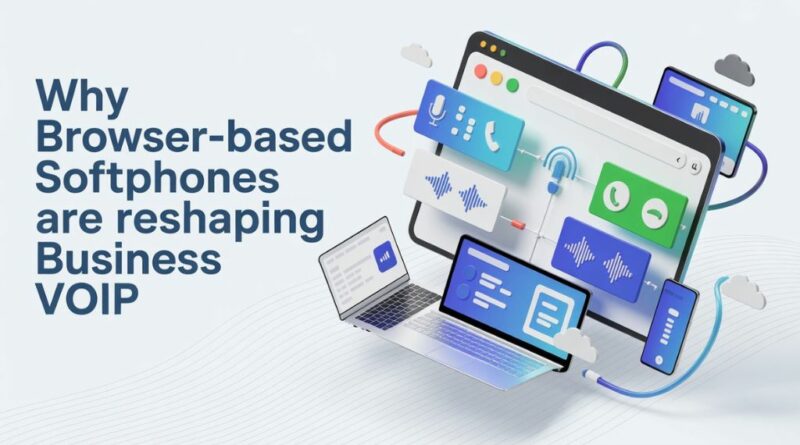Why Browser-Based Softphones Are Reshaping Business VoIP
The era of the desk phone is fading fast. As businesses migrate to cloud communications, browser-based softphones have become the bridge between traditional PBX systems and the new world of WebRTC-powered VoIP.
This article explores why browser softphones are gaining traction, how they differ from installed apps, and what makes them a smart choice for modern teams.
From Hardware to Browser: The New Age of VoIP
Not long ago, businesses relied on physical SIP phones connected to on-site PBX servers. These setups were powerful but rigid — adding users meant rewiring hardware and managing licences.
Browser softphones change that entirely. Built on WebRTC, they require no installation, run directly in any modern browser, and connect seamlessly to SIP or PBX systems.
➡️ Learn more about WebRTC here
Why Browser Softphones Are Transforming Communication
1. Zero Installation, Instant Access
A WebRTC softphone lives in the browser. Users log in from any device — laptop, tablet, or mobile — and start calling immediately. There’s no software to update, no IT maintenance, and no downtime.
2. Cost-Effective Scalability
Companies save on hardware and licensing costs. New users can be added in seconds, and remote employees connect from anywhere with an internet connection.
3. Security Built In
WebRTC uses end-to-end encryption by default (DTLS-SRTP). This ensures conversations stay private without needing extra VPN layers.
➡️ IETF SRTP security specification
4. Perfect for Hybrid Work
Browser-based VoIP aligns perfectly with hybrid office setups. Teams can make and receive calls from home or the office, using the same virtual number.
Softphones vs Installed SIP Clients
Traditional SIP softphones like Linphone or Zoiper need local installation and manual configuration. By contrast, browser softphones:
- Run instantly in Chrome, Edge, or Firefox
- Use WebRTC for native media handling
- Auto-register with the company’s SIP proxy
- Require minimal technical skill to deploy
Projects like Asterisk and FreeSWITCH can easily integrate these web-based clients into their PBX backends.
How Siperb Fits Into the Picture
Platforms like Siperb are driving this shift. As a browser-based WebRTC SIP client, Siperb lets businesses connect PBX or VoIP systems directly through the web — without plug-ins, downloads, or complex setup.
Its design philosophy is simple: real-time communication should be instant, encrypted, and infrastructure-agnostic.
The Future Is Browser-Native
The browser is quickly becoming the new communications hub. WebRTC’s maturity means near-native call quality, while its security model protects voice and video at protocol level.
As remote work, mobile teams, and cloud PBXs continue to rise, browser-based softphones aren’t just an upgrade — they’re the future of business VoIP.
For more articles like this, visit SoftpageCMS.



